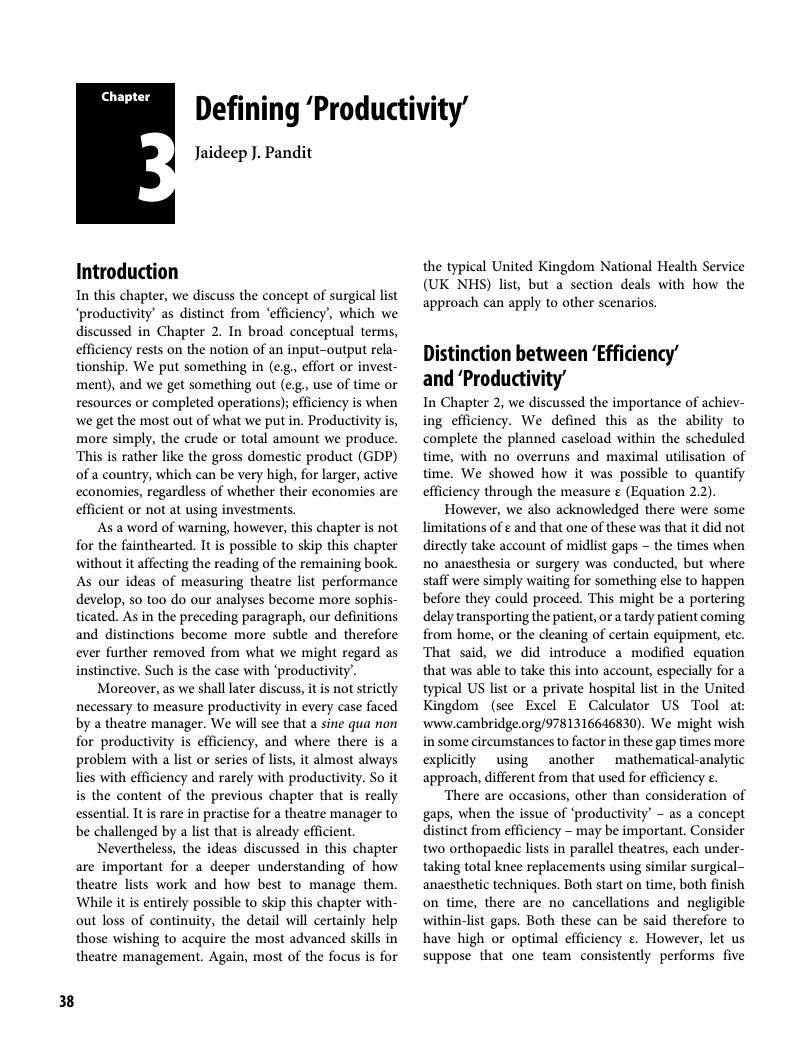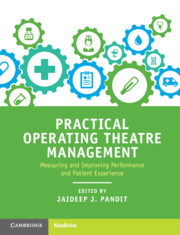Book contents
- Practical Operating Theatre Management
- Practical Operating Theatre Management
- Copyright page
- Contents
- List of Contributors
- Foreword
- Preface
- About the Author
- Chapter 1 Introduction and Scope of the Book
- Chapter 2 Defining ‘Efficiency’
- Chapter 3 Defining ‘Productivity’
- Chapter 4 Case Scheduling
- Chapter 5 Capacity Planning
- Chapter 6 Staffing and Contracts
- Chapter 7 Theatre Finances
- Chapter 8 Preoperative Patient Preparation
- Chapter 9 Operating Theatre Management in New Zealand
- Chapter 10 Operating Theatre Management in Japan
- Chapter 11 Operating Theatre Management in Two European Nations
- Chapter 12 Operating Theatre Management in Australia
- Chapter 13 Operating Theatre Management in the United States
- Chapter 14 Safety in the Operating Theatres
- Chapter 15 A Personal Overview
- Index
- References
Chapter 3 - Defining ‘Productivity’
Published online by Cambridge University Press: 09 November 2018
- Practical Operating Theatre Management
- Practical Operating Theatre Management
- Copyright page
- Contents
- List of Contributors
- Foreword
- Preface
- About the Author
- Chapter 1 Introduction and Scope of the Book
- Chapter 2 Defining ‘Efficiency’
- Chapter 3 Defining ‘Productivity’
- Chapter 4 Case Scheduling
- Chapter 5 Capacity Planning
- Chapter 6 Staffing and Contracts
- Chapter 7 Theatre Finances
- Chapter 8 Preoperative Patient Preparation
- Chapter 9 Operating Theatre Management in New Zealand
- Chapter 10 Operating Theatre Management in Japan
- Chapter 11 Operating Theatre Management in Two European Nations
- Chapter 12 Operating Theatre Management in Australia
- Chapter 13 Operating Theatre Management in the United States
- Chapter 14 Safety in the Operating Theatres
- Chapter 15 A Personal Overview
- Index
- References
Summary

- Type
- Chapter
- Information
- Practical Operating Theatre ManagementMeasuring and Improving Performance and Patient Experience, pp. 38 - 56Publisher: Cambridge University PressPrint publication year: 2018



